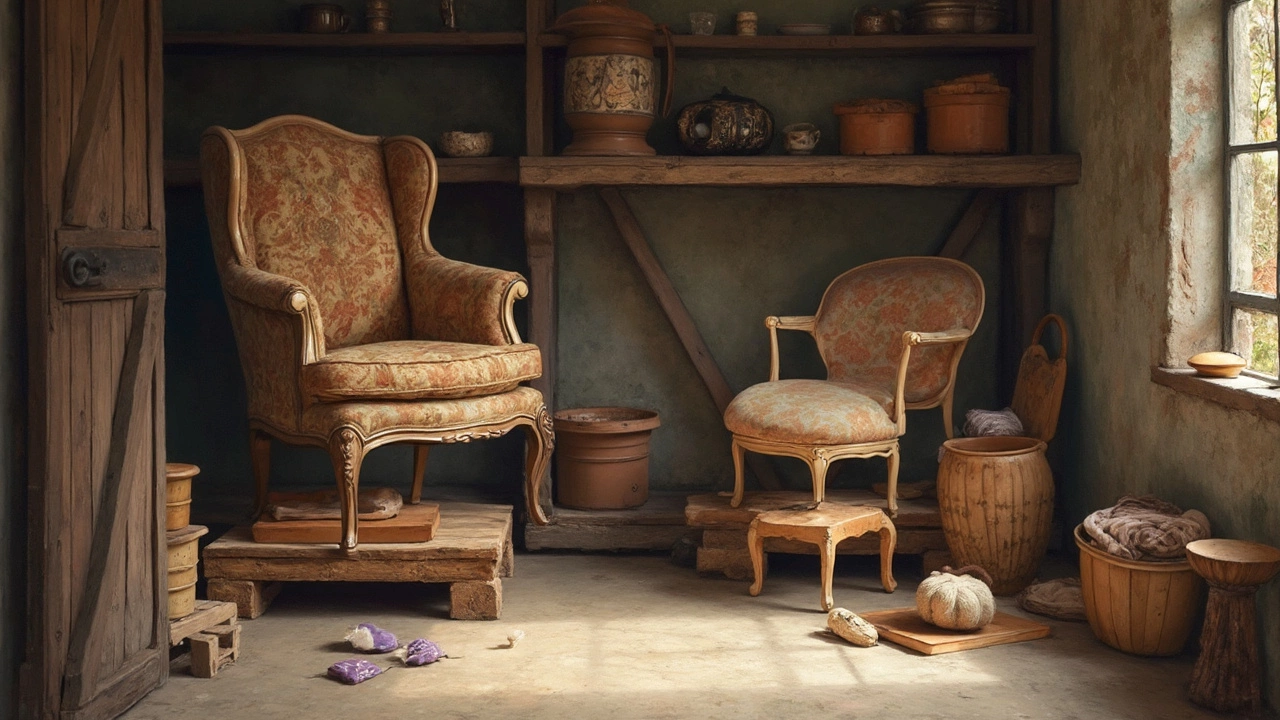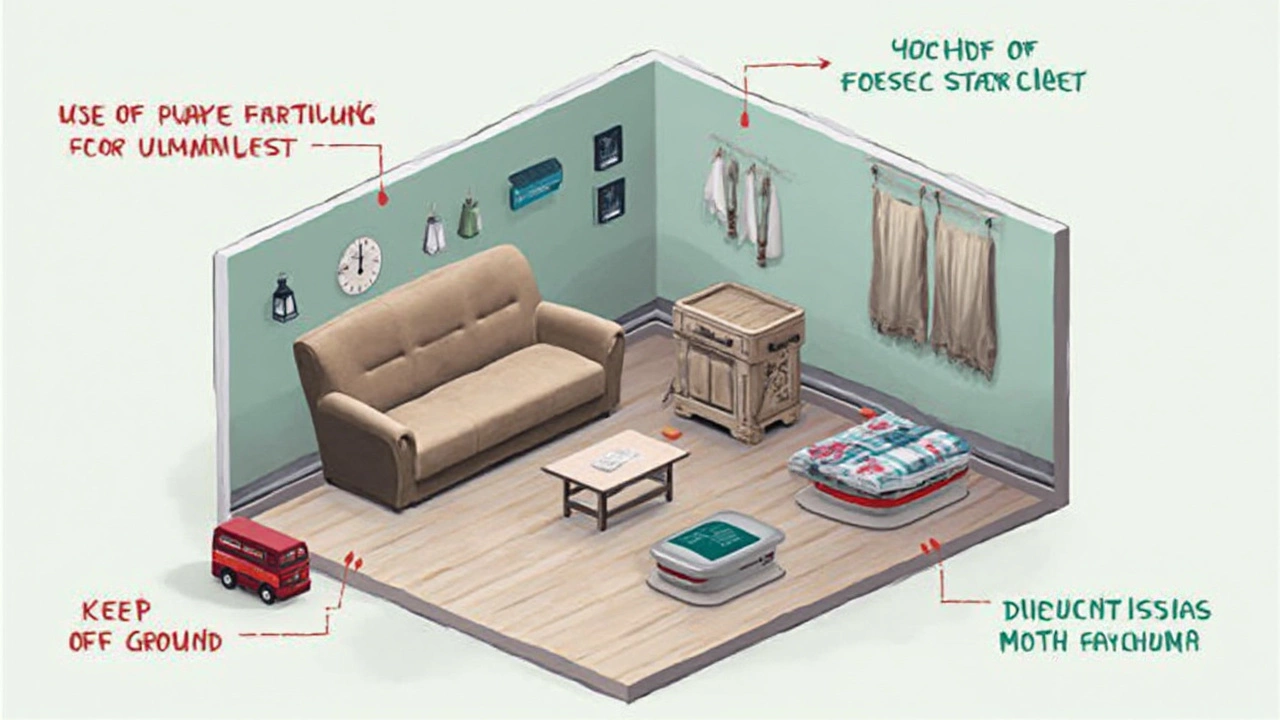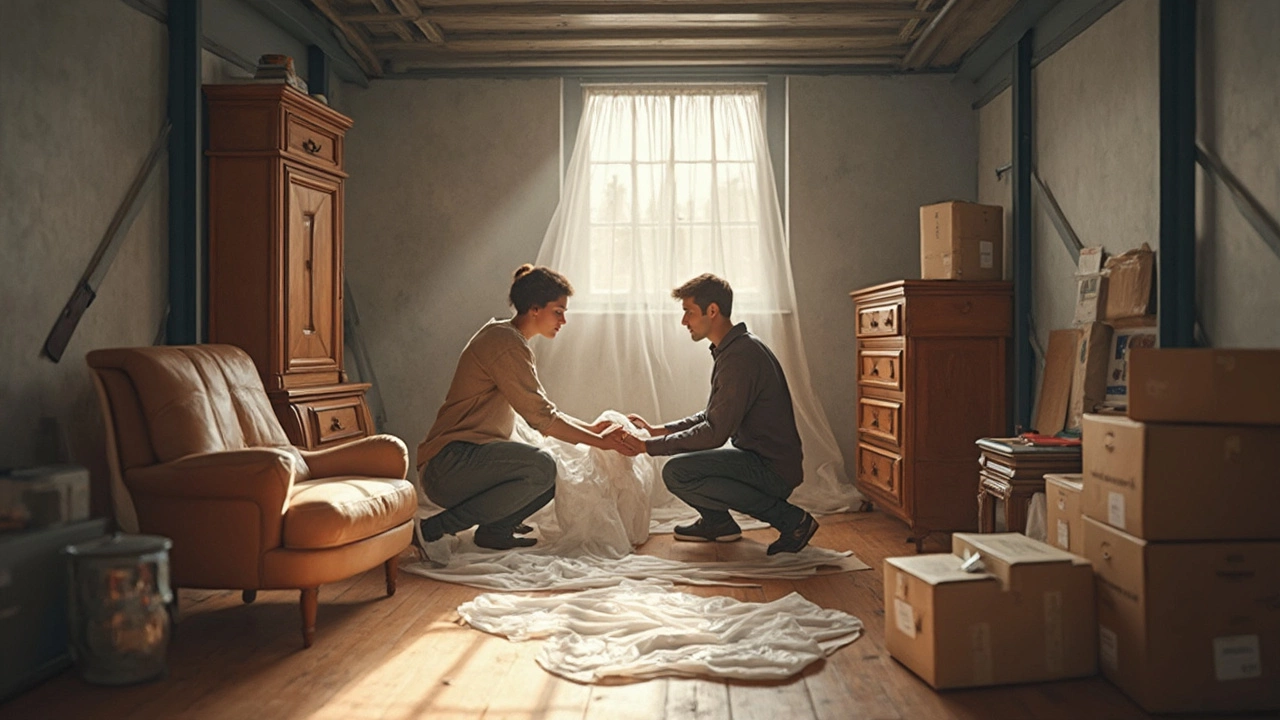Did you know that about 70% of self-storage facilities in the US offer non climate controlled spaces? For many, these units seem like an easy win—no worries about electricity or hefty monthly bills. But, if you’ve got furniture to stash away here, you’re not just playing a game of space Tetris. Weather swings, sneaky moisture, dust, and pests are all plotting against your couch, grandma’s dresser, or that trendy coffee table you barely use. No, the furniture won’t burst into flames or disintegrate overnight, but it won’t age gracefully either unless you protect it.
Understanding Non Climate Control Storage Risks
First off, let’s clear the air on what non climate control really means. These are storage units exposed to the natural elements without any regulation of temperature or humidity. In summer, expect searing heat. In winter, bitter cold. Humidity swings like a yo-yo, and rain or snow can raise the interior moisture above 60% for weeks. Most wooden furniture can start to warp or crack if humidity hovers above 65% for prolonged periods, and mold starts growing in as little as 48 hours under the right conditions.
Here’s a quick glance at what most furniture faces in this environment:
| Item | Main Risk in Non Climate Unit |
|---|---|
| Wooden Furniture | Warping, mold, cracking |
| Upholstery | Mildew, odors, dust mites |
| Leather | Drying, cracking, mildew |
| Metal/Steel Pieces | Rust, corrosion |
Think about it—Would you leave your dinner table on the front lawn for a month? Probably not. That’s about what you risk with non climate storage, only it’s less obvious. The damage is slow-burn: a little mildew here, a warped drawer there. Even plastic furniture isn’t immune. If it’s sitting next to a window or metal door, extreme temps can cause plastic to get brittle and snap. Moral of the story? You need a plan or you’ll be back next season with a trash bag instead of a moving van.
Preparing Furniture for Long-Term Storage
If you think tossing a bed frame into a unit is enough, think again. Success with storing furniture in a non climate control space starts long before moving day. Begin by giving everything a deep clean. Any speck of dirt, drop of grease, or crumb can grow into a big problem in a warm, humid store unit. I once skipped cleaning the cat hair off a sofa—guess who found a whole new ecosystem when he pulled it out months later?
Next, break down pieces when possible. Take legs off tables, remove sofa cushions, and detach headboards. This shrinks the surface area exposed to air, dust, and moisture. Always use vacuum-sealed bags for soft items like cushions or curtains. For wood, treat surfaces with paste wax or furniture oil. This protective layer helps hold out moisture. Metal parts can benefit from a light coat of machine oil or specialized rust-prevention spray. If you’re storing leather, clean and condition it, then use acid-free paper to wrap. Bubble wrap traps humidity, so it’s a no-go for leathers and woods.
Wrap everything—but wisely. Plastic wrap around wood is fine for short periods, but over six months, it can trap condensation and breed mold. Use breathable covers like old sheets, drop cloths, or moving pads. For mattresses, use covers specifically designed for storage. Don’t stack heavy stuff directly on delicate wooden pieces or soft upholstery, as weight can cause permanent dents or warping.

Arranging and Packing Furniture Inside the Unit
When it’s time to fill your unit, the way you pack makes a huge difference. The trick is to keep air moving around your items while keeping out dust and pests. Raise as much furniture as you can off the floor—a wooden pallet or plastic platform works. Floors sweat, especially in damp climates. I’ve heard from folks who lost entire bedroom sets to rising moisture, not even realizing the concrete was the culprit.
Leave a few inches of space between the furniture and the walls, and keep paths clear for quick inspection. Stacking is fine if you do it wisely—heaviest, sturdiest stuff on the bottom, lighter or fragile pieces on top. Don’t pile boxes higher than you can safely manage. Always wrap glass or mirrors with cardboard and then a furniture pad.
If you have big upholstered items, use fitted covers, but avoid tight plastic. Soft, breathable covers allow air flow. And don’t seal storage units airtight; a tiny gap helps prevent musty smells. Some pros use moisture absorbers or silica gel packets under tarps and inside drawers. Replace these every few months if you can access your unit. Also, store mattresses on their side, but never let them lean too much or they might crack or warp.
Pest control is non-negotiable. Mice, silverfish, and even cockroaches are common in non climate controlled spaces. Pack bait traps or mothballs, and never store food, even canned stuff—mice can chew through almost anything.
Dealing With Humidity, Dust, and Pests
Humidity kills. In high humidity zones—southern states, I’m looking at you—add extra defense. A simple rule: If you can smell moisture, it’s already in your stuff. Use commercial moisture absorbers like DampRid, and set them under the most valuable pieces. Charcoal can help as a DIY moisture buster. For high-value items, there are desiccant canisters you can reactivate in the oven every few weeks.
Dust is everywhere, even if it doesn’t look like it. Dust loves fabric, and once it settles, it’s tough to clean off. Double-layer cotton sheets can help, and vacuum the outside of covers if you visit. Don’t use newspaper for padding—ink transfers during damp weather. Instead, choose acid-free tissue for delicate surfaces or items with finishings you care about.
Pests sneak in through cracks and vents. Rub peppermint oil or cedar blocks near entry points. These scents repel critters—at least enough to steer them elsewhere. Mothballs work but make sure they don’t touch surfaces directly, as they can stain. Check for webs or droppings whenever you visit your unit so you can catch infestations early. I’ve seen what one missed mouse can do to a hand-carved chair—let’s just say Whiskers, my cat, isn’t the only one who appreciates a good cushion.

Regular Maintenance and Inspection Tips
Your job isn’t finished once the last chair is inside. Schedule time—every three months is a good pace—to check on things. Open the unit, air it out, and look for any signs of trouble like condensation on covers, a musty smell, or new dust spots. Swap out moisture absorbers, and give the covers a quick wash if they start to smell.
If something’s gone wrong, like a popped seam or signs of warping, act fast. Re-wrap with fresh pads, reapply oil or wax, and rearrange items if needed. Keep an inventory and snap pics so you can monitor changes over time. Tracking any shifts helps you react before small problems become big headaches.
And don’t forget to keep your storage payment current—auctions aren’t as rare as you think, and all that hard work goes up in smoke if you miss a bill. Pro tip: If you know a weather event is coming (like a long spell of rain or a cold snap), check on your unit before and after. A tiny leak now is easier to fix than a flooded box full of ruined memories down the line.
Surprise fact: According to the 2023 Self Storage Almanac, the average American keeps storage units for just over 15 months—long enough for seasons to change and for all these storage risks to do damage. A little prep and regular TLC can make all the difference, leaving your furniture looking as good as when you stashed it. Or at least, ready to survive another round, maybe even a visit from my furry sidekick Whiskers.





